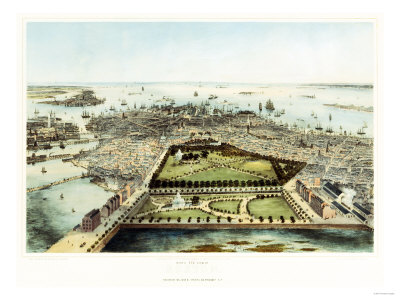After the American Revolution many cities started to develop, this allowed man y business enterprise to form. Some of those cities that grew because a strong national government was formed were Chicago, Detroit, Milwaukee, and Cleveland. Before they became cities they were small towns trying to foster growth, this motive for growth allowed small towns to become cities. They competed against each other by creating incentives lure many merchants. Chicago, Cleveland, and Detroit were small cities that had no direction but to become megacities. They looked to other cities like New York, Baltimore, and Boston for consult. The main cities they looked for help were Boston and New York.
Boston and New York were the main cities that many small towns looked at for help to grow. Both cities were similar in many ways. New York and Boston were formed during the colonial era before the American Revolution. New York City and Boston were located near the port because their access to the ocean was vital to many merchants. What is really amazing is that their origins started because merchants wanted to have an area that allowed business to operate. Because of their business friendly atmosphere the British Empire saw how economically important they are to the crown. But there to response to the Crown activity in their daily affairs makes them different.
Even though Homberger focused on how important New York is to America history, Chaudacoff sees Boston played the most important role to America history. After the crown repealed the Townshend Act many cities stop protesting except Boston, Boston sought that welfare of its people were treated appropriately. In New York City, merchants had the final decision while in Boston it was the collective decision of townspeople. That is why Chaudacoff writes that many people lost interest in Boston due to its expensive taxes. That is why many people did not stop the protest. They were given taxes that they did not like or voted on. Boston became the center where hatred and resistance toward the crown was persistent. They also became center of the crown punishment on spread fear among the colonist if they provoked the king. But what really separate Boston from New York or any other city was that it can became center of change.
After the revolution Boston became an experiment city. Well every city was an experiment but in Boston the most social experiment was formed. They were the first to have base salary policemen to encourage public safety. Even though Boston did not have a large population compared to Baltimore and New York, it was a city that resembled more of our present day European welfare cities. Where the public welfare and quality of life is the most important.

Boston












